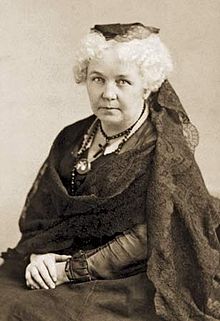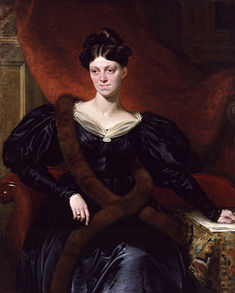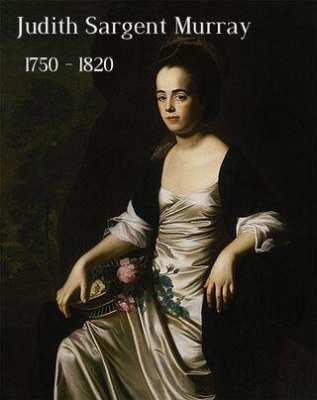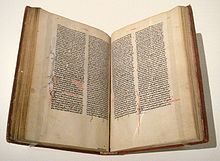Why Ada Lovelace is considered the founder of scientific computing?

Ada Lovelace was one of the most picturesque characters in computer history. She was the daughter of the poet Lord Byron, and her mother, who did not want her to become a poet like her father, brought her up to be a mathematician and scientist.
She wrote a scientific paper in 1843 that anticipated the development of computer software, artificial intelligence, and computer music. She wrote the world’s first computer programmes for the Analytical Engine, a general-purpose machine that Charles Babbage had invented. The calculations were never carried out, as the machine was never built. She also wrote the very first description of a computer, and of software.
Understanding that computers could do a lot more than just crunch numbers, Ada suggested that the analytical engine ‘might compose elaborate and scientific pieces of music’. Sadly, she never had the chance to fully explore the possibilities of either Babbage’s inventions or her own understanding of computing, for she died, aged only 36, on 27th November 1852, of cancer.


 Margaret Fuller was America’s first true feminist. She was also a social reformer, critic, and teacher whose words enriched the lives of many people. Margaret received a good classical education, which was very unusual for a young girl at that time.
Margaret Fuller was America’s first true feminist. She was also a social reformer, critic, and teacher whose words enriched the lives of many people. Margaret received a good classical education, which was very unusual for a young girl at that time. Harriet Martineau is an inspiration for women with multiple disabilities. She suffered from ill heath, a number of disabilities, and deep childhood unhappiness. Still she became a major intellectual force of her day. Not only was she a scholarly success, but she exerted a strong social force to improve the status of women and the poor.
Harriet Martineau is an inspiration for women with multiple disabilities. She suffered from ill heath, a number of disabilities, and deep childhood unhappiness. Still she became a major intellectual force of her day. Not only was she a scholarly success, but she exerted a strong social force to improve the status of women and the poor. Dorothea Dix did more than anyone else of her generation to improve the lives of mentally ill people in America. In 1841, she volunteered to hold a devotional hour for women in the East Cambridge jail, and was aghast to discover that some of the tattered inmates were chained in a filthy, cold cell simply because they were mentally ill. Dix then devoted her life to improving conditions for the mentally ill. She travelled more than 30,000 miles over a three-year period to spur legislators into doing the right thing for the mentally ill. She became Superintendent of Female Nurses during the Civil War, and after the war, resumed travel throughout the United States and Europe on behalf of the mentally ill. By 1880, Dix had a direct hand in founding 32 of 123 mental hospitals in the country.
Dorothea Dix did more than anyone else of her generation to improve the lives of mentally ill people in America. In 1841, she volunteered to hold a devotional hour for women in the East Cambridge jail, and was aghast to discover that some of the tattered inmates were chained in a filthy, cold cell simply because they were mentally ill. Dix then devoted her life to improving conditions for the mentally ill. She travelled more than 30,000 miles over a three-year period to spur legislators into doing the right thing for the mentally ill. She became Superintendent of Female Nurses during the Civil War, and after the war, resumed travel throughout the United States and Europe on behalf of the mentally ill. By 1880, Dix had a direct hand in founding 32 of 123 mental hospitals in the country.
 Sojourner Truth was a woman of remarkable intelligence despite her illiteracy. She was born a slave, and her real name was Isabella Baum free. She was sold several times before slavery was abolished in 1827 in New York.
Sojourner Truth was a woman of remarkable intelligence despite her illiteracy. She was born a slave, and her real name was Isabella Baum free. She was sold several times before slavery was abolished in 1827 in New York. Olympe de Gouges was born to working class parents, but took her place amidst the French intellectuals who advocated the French Revolution. She was a popular playwright, and she strongly advocated the rights of French women. She spoke for not only herself, but many of the women of France, when in 1791 she wrote and published the ‘Declaration of the Rights of Woman and of the Citizen’. Olympe asserted that woman was not simply the same as man, but that she was his equal partner, and so, she should enjoy the same rights as man. Unfortunately, Olympe was too far ahead of her times. For asserting this equality, and repeating the assertion publicly, Olympe de Gouges was arrested in July 1793, four years after the Revolution. She was sent to the guillotine in November of that year.
Olympe de Gouges was born to working class parents, but took her place amidst the French intellectuals who advocated the French Revolution. She was a popular playwright, and she strongly advocated the rights of French women. She spoke for not only herself, but many of the women of France, when in 1791 she wrote and published the ‘Declaration of the Rights of Woman and of the Citizen’. Olympe asserted that woman was not simply the same as man, but that she was his equal partner, and so, she should enjoy the same rights as man. Unfortunately, Olympe was too far ahead of her times. For asserting this equality, and repeating the assertion publicly, Olympe de Gouges was arrested in July 1793, four years after the Revolution. She was sent to the guillotine in November of that year.
 Sophie Germain was born in an era of revolution. In the year of her birth, the American Revolution began. Thirteen years later, the French Revolution began in her own country. She herself became a revolutionary mathematician, number theorist, and mathematical physicist.
Sophie Germain was born in an era of revolution. In the year of her birth, the American Revolution began. Thirteen years later, the French Revolution began in her own country. She herself became a revolutionary mathematician, number theorist, and mathematical physicist.

 Judith Sargent Murray was an eighteenth-century writer known for her essays on education for women, on equality, and on economic independence for all people. She has a series of ‘firsts’ to her name. Judith was the first American woman to self-publish a book, one of the first American writers of plays, and the first woman to have a play produced on stage in America. She was also the first to claim female equality in print, and the only eighteenth century woman to have kept ‘letter books’ in a consistent manner.
Judith Sargent Murray was an eighteenth-century writer known for her essays on education for women, on equality, and on economic independence for all people. She has a series of ‘firsts’ to her name. Judith was the first American woman to self-publish a book, one of the first American writers of plays, and the first woman to have a play produced on stage in America. She was also the first to claim female equality in print, and the only eighteenth century woman to have kept ‘letter books’ in a consistent manner.
 Queen Isabella was the Queen of Castile, who, along with her husband, King Ferdinand of Aragon, financed Christopher Columbus’ expedition to the Indies, which resulted in the discovery of America. She was the half sister of Henry IV, who succeeded to the Castilian throne in 1454. Henry had recognized Isabella as his heir, but when she married Ferdinand of Aragon in 1469, Henry conferred the succession on his daughter. This led to a civil war when Henry died.
Queen Isabella was the Queen of Castile, who, along with her husband, King Ferdinand of Aragon, financed Christopher Columbus’ expedition to the Indies, which resulted in the discovery of America. She was the half sister of Henry IV, who succeeded to the Castilian throne in 1454. Henry had recognized Isabella as his heir, but when she married Ferdinand of Aragon in 1469, Henry conferred the succession on his daughter. This led to a civil war when Henry died. Hatshepsut was the first wife, and Queen of Thutmose II. When he died, she proclaimed herself Pharaoh, denying the old king’s son his inheritance. Hatshepsut was a very unique and intelligent individual. She used various strategies to legitimize her position as pharaoh. She claimed God told her to rule as the king, and so she took on several male adornments while she ruled Egypt. Unlike most women of that time, she attached a false beard, wore male clothing, and was depicted in statutes as a pharaoh, and not as a queen.
Hatshepsut was the first wife, and Queen of Thutmose II. When he died, she proclaimed herself Pharaoh, denying the old king’s son his inheritance. Hatshepsut was a very unique and intelligent individual. She used various strategies to legitimize her position as pharaoh. She claimed God told her to rule as the king, and so she took on several male adornments while she ruled Egypt. Unlike most women of that time, she attached a false beard, wore male clothing, and was depicted in statutes as a pharaoh, and not as a queen.


 ‘The Tale of Genji’ is a Japanese epic that is divided into 54 books or episodes. The action covers the better part of a century, with over 400 characters spanning four generations. The hero, Hikaru Genji or the Shining One, seeks love and happiness driven by the haunting image of his dead mother. Because of his exuberant personality Genji becomes very popular. But the novel that begins with the enchanting atmosphere of a fairy tale ends in the most complex psychological analysis of unhappy people shrouded in blackest gloom.
‘The Tale of Genji’ is a Japanese epic that is divided into 54 books or episodes. The action covers the better part of a century, with over 400 characters spanning four generations. The hero, Hikaru Genji or the Shining One, seeks love and happiness driven by the haunting image of his dead mother. Because of his exuberant personality Genji becomes very popular. But the novel that begins with the enchanting atmosphere of a fairy tale ends in the most complex psychological analysis of unhappy people shrouded in blackest gloom.
